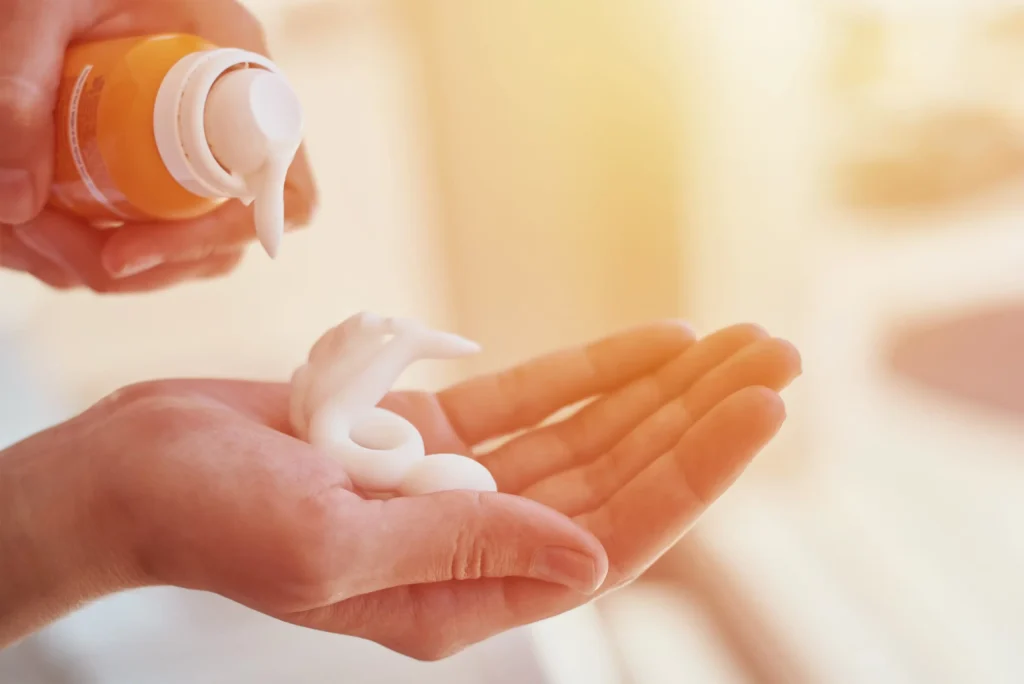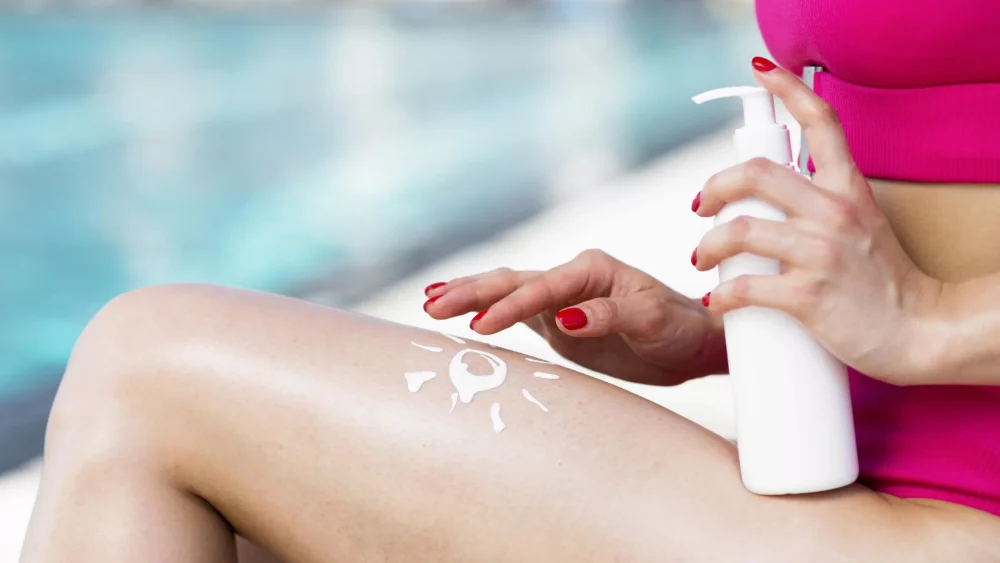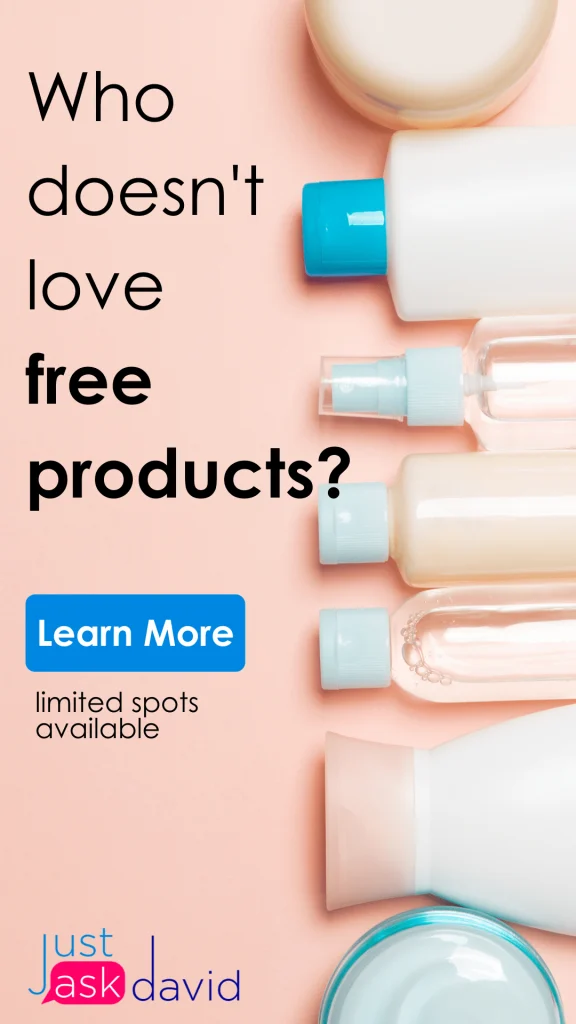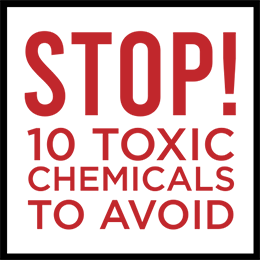We all want to relax and have fun in the sun this summer. Most of us will be protecting our skin with sunscreen, but what if I told you that your sunscreen may not prevent sun damage as effectively as you think?
Most people don’t understand what to look for on the labels of their sunscreen products or how to use them correctly. Some beauty brands take advantage of the fact that sunscreen is a hot skincare item without providing any education on how to use them effectively.
Don’t worry, Detective David is here to save the day again. Here’s what the skincare industry doesn’t want you to know about sunscreen.
How Does Sunscreen Protect Our Skin?
Sunscreen is one of those things we all know we’re supposed to use, but few of us actually know why. Plenty of people make the mistake of thinking that you only need to wear sunscreen in the summertime.
The truth is, sun damage to skin can happen regardless of the weather. (In fact, sun damage can actually be worse in the winter time — UV rays from the sun can hit you directly and then bounce off the snow and hit you again. You ski-bunnies out there especially need to protect your skin from the sun, because UV rays are stronger at higher altitudes!)

So how does sunscreen actually work?
Sunscreen absorbs, reflects, and scatters ultraviolet (UV) light. UV light is a type of radiation that comes from the sun and can damage your skin. Sunscreen helps to protect your skin from this damage by creating a barrier between your skin and the UV light. Sunscreen also contains chemicals that absorb UV light. This means that even if some UV light reaches your skin, it won’t be able to cause as much damage.
The sun puts out two types of UV rays — UVA and UVB. UVB rays are the ones that burn our skin. UVA rays are the ones that penetrate into our skin more deeply and are believed to be responsible for long term skin damage, like sun damage spots and cancer.
Summed up: What’s the difference in UV protection?
- While both are damaging to the skin, UVA rays create wrinkles and brown spots, while UVB rays are responsible for the redness and sunburns.
- Look for a product that offers UVA and UVB protection.
Things to Know About Sunscreen SPF Ratings:
What does the SPF in sunscreen stand for, and what does the number next to it mean? The SPF (“sun protection factor”) in sunscreen is a measure of how much longer you can be in the sun than you could have without any sunscreen. For instance, an SPF 50 sunscreen will let you be exposed to the sun for 15 times longer without getting sunburnt.
Sunscreen SPF Quick Tips:
- The SPF rating only applies to protection from sunburn or the UVB rays.
- A product labeled with an SPF 15 simply means that it will take 15 minutes longer for the skin to redden, than if no product were used at all.
- Many think that if an SPF 15 lotion screens out 93% of the sun’s UVB rays, an SPF 30 must be double the protection. But this is incorrect. Any product labeled with an SPF 30 or higher simply means it provides 97-98% protection from the sun’s UVB rays.
- High SPF ratings of 50 or even 100 do not completely block out the damaging rays and may not be worth the extra money.
The Dangers of Sunscreen: FDA Approved?
Did you know that SPF 50 sunscreen and higher can’t be effectively tested to see how well they protect us from sun damage?
Another little industry secret is that the SPF in sunscreen only provides protection from UVB rays. That means no matter how often you’re applying sunscreen, you’re not protecting yourself from UVA rays– the ones that cause serious long term skin damage. There is currently no rating for UVA protection, but using a waterproof, broad spectrum sunscreen is likely the safest way to go.
Now we come to my biggest pet peeve in the beauty industry — FDA issues.
The 2011 FDA rules allow sunscreen lotion brands to claim their product can decrease the risk of skin cancer. But of course, since we just learned that sunscreen doesn’t completely protect your skin from the sun’s cancer-causing UVA rays, it shouldn’t be surprising to hear that there is little evidence to support that.
Even worse, there is some evidence that for some people, sunscreen can cause cancer — though this might be because of user error. Many people get a false sense of security when they slather on the highest SPF sunscreen they could find in the store — they’re not very likely to reapply. As a South Floridian, I can say that I’ve seen people make this mistake countless times.
European sunscreen brands have over 60% more formula options than we do in the US. The ingredients used in Europe have been shown to protect up to five times better. Makers stateside have been waiting years for FDA approval to use those same combinations.
Since 2021, the European Commission has conducted studies on three organic UV filters used in sunscreen: oxybenzone, octocrylene, and homosalate. Although safe in small doses, there is not enough scientific data to declare these chemicals as safe in the long run. They have been found in urine and breast milk samples, suggesting that these chemicals remain in the bloodstream for a long time. This is known as bioaccumulation, which can disrupt the body’s natural processes. The European Commission recommends a concentration limit of about 2%. The FDA allows sunscreen manufacturers in the United States to use up to 15%.

Prevent Sun Damage -- The Right Way
Once you understand what is in sunscreen to protect the skin and its limitations, you are in the powerful position to keep yourself and your family protected — not just through the summer months, but throughout your lifetimes.
Remember that every time you purchase a particular sunscreen brand, you’re sending a message. Do your research and only buy what is best for you and your family. Once you’ve figured that part out – get out there and have some fun!





Comments are closed.